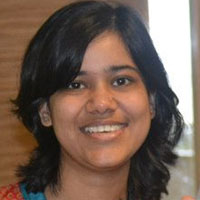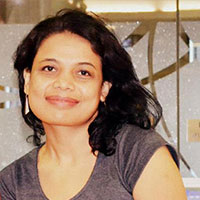Do poor people save? This column portrays the saving and financial behaviours and preferences of the poor. It recommends designing and marketing savings products that address the constraints they currently face.
A CMF-IFMR study conducted in five cities of India found that three-fourth of poor respondents save using various formal and informal saving mechanisms, and they rely almost exclusively on their personal savings to finance unexpected expenditures (Deepti KC 2011). Rutherford found that women in urban slums of Vijaywada, Andhra Pradesh saved as little as Rs. 5 daily with deposit collectors to ensure savings at home are not squandered away (1999). In return, women gave up part of their savings as fees, earning a -30% annualized interest rate on their savings. Behavioral literature also indicates that poor understand the importance of savings and they save using diverse channels (Bertrand et al 2006). Access does not equal usage
The Reserve Bank of India (RBI) has initiated a financial inclusion drive to remove cost barriers via No Frills Accounts (NFA), and improve delivery channels through the Banking Correspondents (BC). Additionally, state governments have been promoting savings by making it mandatory to deliver wages to participants of government schemes through formal saving accounts rather than cash payments. The financial inclusion policy also recommends cooperative societies, post offices and Self-Help Groups to mobilise formal savings devices for the poor. However, financial access does not always equal usage, as many recipients of these financial services do not actually use them or understand their purpose
A CMF-IFMR study conducted in rural Andhra Pradesh found that even though 78% of rural households had access to a formal savings account, a vast majority of those accounts (79%) were opened either to receive government benefits or to increase the chances of receiving a loan, but not for voluntary savings(Johnson et al 2010). The study found that having little knowledge about the banks and their products, and banking fees and expenses were primary reasons for the low usage of formal savings accounts.
Therefore, low participation rate and take-up of formal financial services and products could be because of clients’ limited awareness and understanding about financial instruments, and their perception that banks may not accept their small and sporadic savings. They might also find the banking system unfamiliar, threatening, or stigmatising, creating a perception that he or she is not a valued customer at the bank (Bertrand et al 2006).
Designing and marketing saving products to suit needs of poor
While formal savings products are safer and cheaper, studies indicate that poor turn to informal savings mechanisms because of their convenience, accessibility, and flexibility–features that appeal to the saving preferences of the poor. To ensure that the poor take-up safer formal financial products, barriers currently being experienced by the poor need to be reduced, and products must be designed and marketed in a way that accommodates savings preferences of the poor.
Ensuring flexibility
Deriving from the theory of behavioural economics and findings from various studies, we recommend designing of modified (soft) commitment savings devices that are flexible enough to accommodate the unsteady and varied savings preferences of the poor.
CMF-IFMR conducted a pilot experiment that encouraged a small-group of low-income respondents to commit to saving once a week for any three weeks over a six-week period. Respondents set a saving goal by writing a promise to self or making an oral promise in presence of the administrator of the experiment. No penalties were charged for default. Though the experiment provided no financial product and involved just a promise to save, take-up rate was encouraging at 73%, with 17% respondents achieving their stated goals.
Another experiment found that commitment savings products and default savings options may help reduce frivolous and temptation spending (Karlan 2009). Likewise, a study found that for clients who may be inattentive to savings needs, or are overly optimistic about their future savings, specific reminders associated with expenditure (or savings goals) are especially useful (Karlan 2011). In Peru, clients who received specific expenditure reminders, increased savings by 6% compared to those who received no reminders. This could be because “mental accounting” plays an important role during savings - where people seem to physically or mentally compartmentalise expenditures into various categories and save accordingly (Mullainathan 2009). Additionally, messages from a third-party work better than self-generated messages because third-party messages seem official in nature and establish a sense of trust amongst clients (Karlan 2011). These studies highlight that the take up of the product increases if there is strong relationship between the client and the channel used for savings information dissemination. Thus, the design, delivery and marketing of savings products need to be compatible with savings needs and address behavioural constraints faced by the poor.
Default savings options must be introduced where possible to further reduce barriers to savings. These studies highlight that a small tweak in product design can encourage the take-up of formal savings products. We recommend that such experiments with a varied range of commitment saving products require further exploration.
Use of technology
Product delivery costs for financial institutions and service providers should not be prohibitively high. Technology can help increase take-up and usage of these savings products. For example, the Jipange Ku Save (JKS) model directly deposits client’s interest fee loans into the client’s M-PESA1 mobile wallet, with one-third of the principal held back as savings. Initial assessments of the pilot phase show this technology enabled savings, and more than three-fourth of the clients started repaying at least a portion of their initial loan within two months. Repayments are also done using mobile technology that reduces transaction cost for providers.
In the Indian context, RBI must encourage financial institutions and mobile providers to test such innovative savings products that benefit the client, and are also profitable for service providers. RBI has proposed that banks use the services of NGOs, Self Help Groups (SHG), Micro Finance Institutions (MFI) and other civil societies (excluding Non-Banking Finance Companies (NBFC)) as intermediaries in providing financial and banking services through the usage of Business Facilitators (BFs) and BCs. However, a CMF-IFMR study found agents are struggling to make their business profitable and financially sustainable as the current commission structure is not adequate to cover costs. Thus, the Government must promote the adoption of innovative savings products with appropriate technology to address the shortage of well-designed formal savings products.
Increasing awareness and understanding
Products must be designed to address the psychological constraints faced by poor when accessing formal savings products. In India, awareness campaigns such as public announcements with the help of trusted local governance institutions, and simple instructional flyers will be useful in promoting savings. Banks should be marketed to the poor as an avenue to save – not just to borrow. To increase take-up, products must have add-on features such as basic literacy about the products. Additionally, product enrolment procedures should be simpler, more transparent and convenient.
Redefining financial inclusion
Lastly, the definition of financial inclusion must be re-addressed by the Government of India. The informal financial sector meets the savings needs of the poor by offering timely and flexible products and services. Therefore, the role of the informal financial providers should not be completely written off from the financial inclusion mandate. Instead, the favourable features of informal financial products and services must be adopted by the formal financial institutions, and the RBI should work towards regulating and monitoring the major informal financial providers through better fraud and theft reporting and remediation, better returns on funds deposited by members, and opportunities for linkages with the bank by converting groups into SHGs where possible.
Notes:
- M-PESA is a mobile money account that the client can access and operate via a mobile phone.
Further Reading
- CGAP Brief, October 2012. The JipangeKuSave Experiment in Kenya
- Bertrand, Mullainathan and Shafir. 2006. Behavioral Economics and Marketing in Aid of Decision Making Among the Poor, AMA.
- Johnson, Doug & Meka, Sushmita. 2010. Access to Finance in Andhra Pradesh: IFMR-CMF.
- Karlan, Dean et.al. 2009. Access to Finance: Ideas and Evidence The Economics of Saving: Financial Access Initiative, IPA.
- Karlan, Dean et.al. 2011. Getting to the Top of Mind: How Reminders Increase Saving: IPA.
- KC, Deepti et.al. 2011. Rethinking Reserve Bank of India Regulations for MFIs: An Analysis of Microfinance Clients from Urbana and Semi-urban Communities: IFMR-CMF.
- Mullainathan & Shafir. 2009. Savings Policy and Decision-making in Low-Income Households: Financial Access Initiative, IPA.
- Rutherford, Stuart. 1999. The Poor and Their Money: An essay about financial services for poor people: Department for International Development, New Delhi.




 23 January, 2013
23 January, 2013 






Comments will be held for moderation. Your contact information will not be made public.